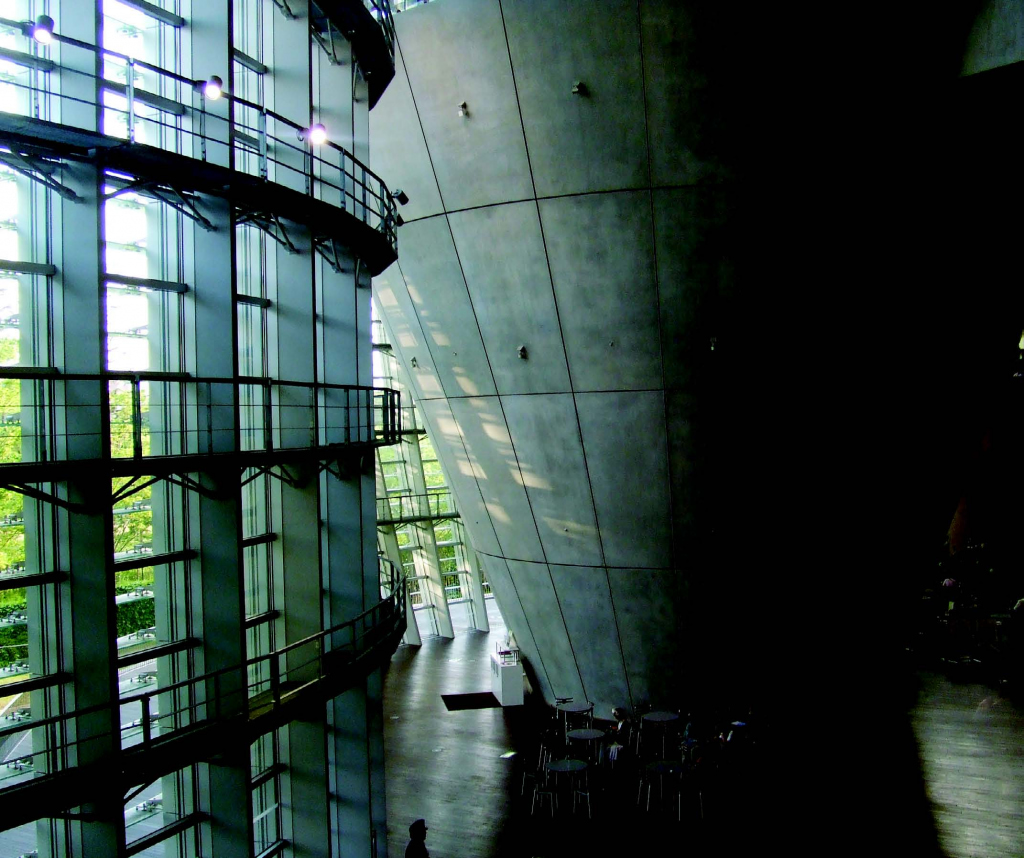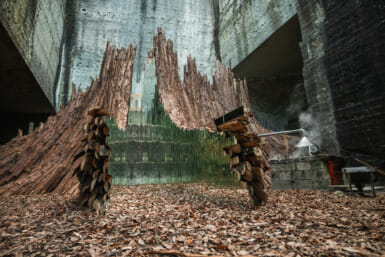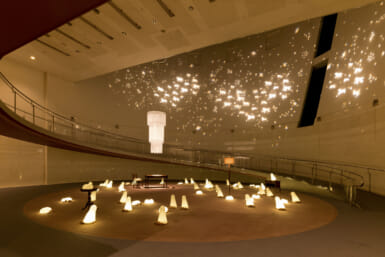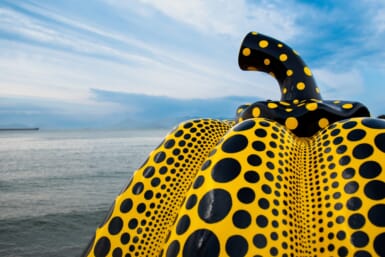by Owen Schaefer
The room is dimly lit and as you turn the corner you find it filled floor-to-ceiling with antique Japanese chests piled in towers. At the same time, your nose is assailed by the unmistakable benzene scent of mothballs—which, by itself, doesn’t seem altogether strange. It is as though you’ve walked into an enormous attic with its requisite smell of preservation. But peeking into a half-opened drawer, you make out delicate and translucent-white sculptures—a tiny frog, a pair of women’s gloves. Is it ice? Plastic? No. You suddenly realize that what you smell is the art itself.
Color of Silence is Aiko Miyanaga’s standout section of the nine-artist showcase Artist File 2009 at the National Art Center Tokyo and the highlights of this year’s annual show far outweigh the lows. The third Artist’s File show since NACT’s opening in January of 2007, it showcases some of the overlooked talent that the curators have come across in the course of their ‘research’ throughout the year.
Aiko Miyanaga is perhaps the only sculptor in the world working chiefly in naphthalene, the stuff mothballs are made from, and she creates sculptures that slowly disappear as the chemical sublimates into the air. Here, we have a pair of ballet shoes full of holes—not moth-eaten, but steadily decaying by the very process usually used to preserve. The play on time and impermanence is doubled by the antiques that house the sculptures and by the fact that the scent you’re breathing in is a few molecules of art that will never be seen again.
Minoru Ohira leaves his own olfactory imprint on the gallery with a set of pungent wooden sculptures—bristling, geometric forms built using materials found outside and around his studio. Titles such as Casa, an umbrella-shaped shelter and Cloud on Ground, more gourd-like than cloudy, point to a wry wit, but the forms also show a brilliant eye for form.
Meo Saito’s work likewise reveals a certain humor, albeit a darker strain. In one section, a red sitting-room is hung with selections from an Encyclopaedia of Abortive Flowers, whose pages contain botanical illustrations and Japanese descriptions of fictional plants with strange, allegorical, and sometimes deadly properties. Saito’s illustrations also have a knack for transforming everyday objects into the sacred, as in Alter for a Housewife in a Slowly Darkening Room.
Shingo Murai’s cubic sculptures are deceptively simple, even austere. The squares of granite are carved with a designer’s attention to edges, with razor-sharp seams and lines that make them appear more manufactured than carved. Some have titles such as Individual, and stand in as abstract human forms. Others are filled with pools of perfectly still water, fusing two elements in a single form. These are sculptures that beg to be touched, though sadly you won’t be able to.
But for new-media art lovers, Peter Bogers takes things to the next level. Bogers is perhaps the most established of the group and his installation The Unified Field is pure brilliance. In a large room, a man’s face appears to be delivering a sermon or sutra, as a chorus of muddy voices broadcast from 14 suspended speakers chimes in, chanting at appropriate intervals. But the religious aspects become parody as viewers realize that the high-priest is in fact a physicist (who ought to know better) lecturing on how transcendental meditation can bring peace to the world. And moving from speaker to speaker, you realize that each ‘chanting’ voice is actually singing a small snippet of a folk-song.
Equally excellent are the moments of almost frightening synchronicity orchestrated by Bogers in Shared Moments, where random people filmed on the street are displayed in multiple frames, orchestrated so that each person looks directly into the camera lens and therefore at the viewer, at precisely the same time. Similarly, we watch a sleeping child open her eyes simultaneously in 12 frames taken at different times. These are moments shared, not by the people we view nor even at the same real time, but shared by the audience themselves. And those moments are intense.










